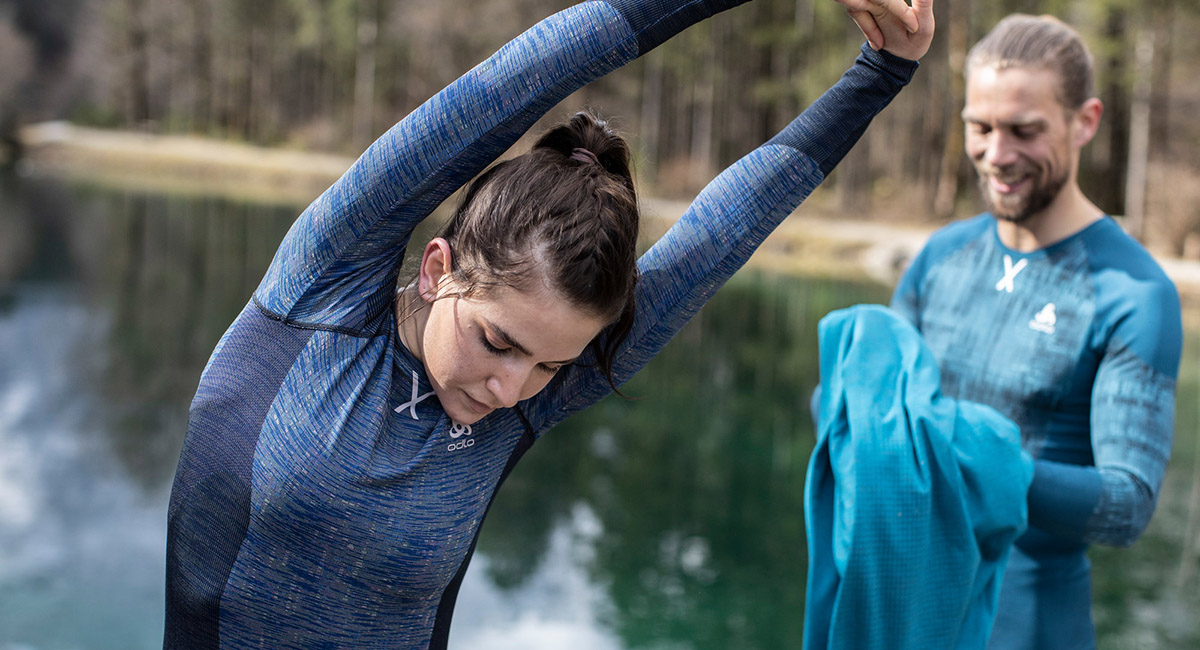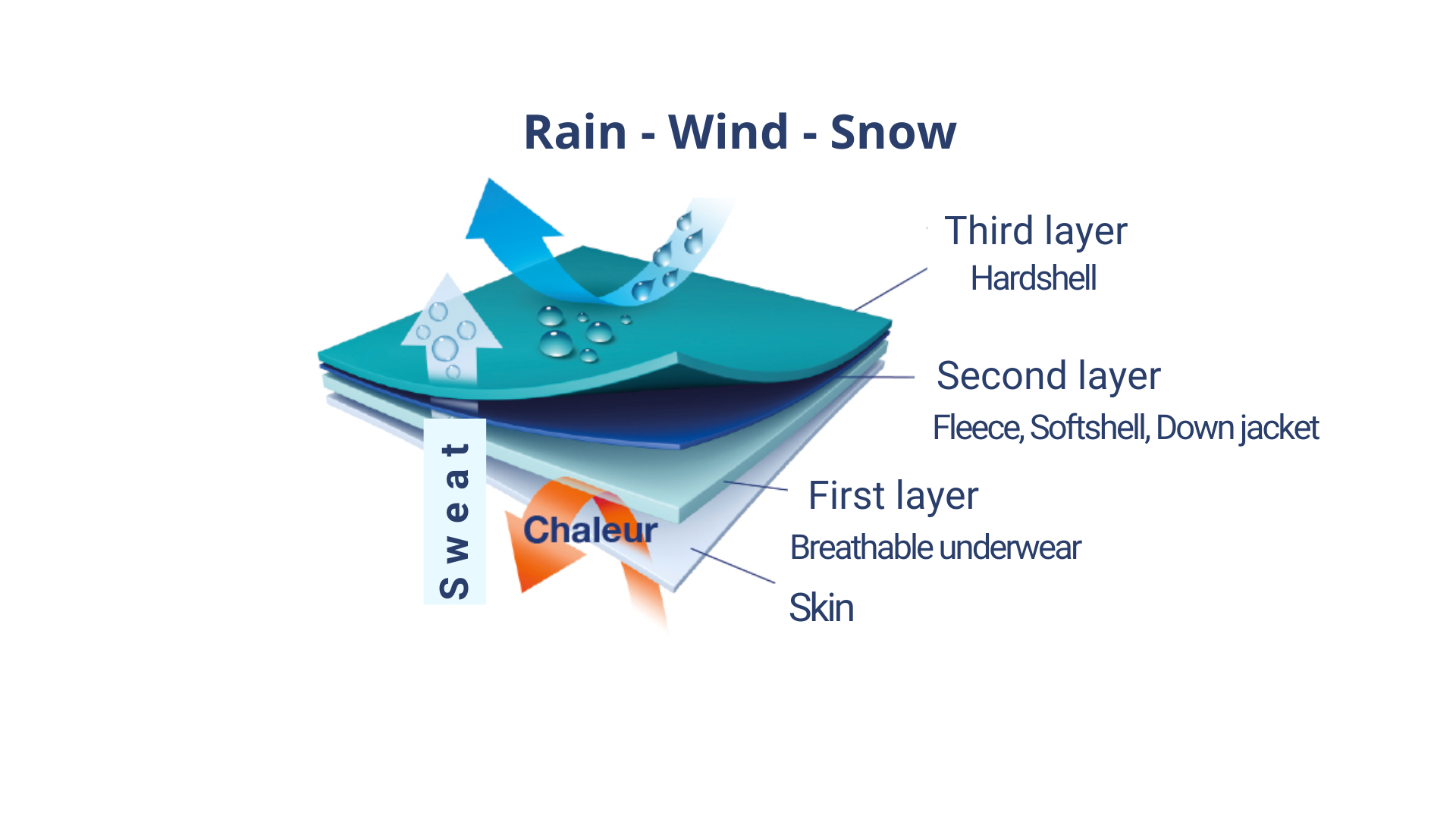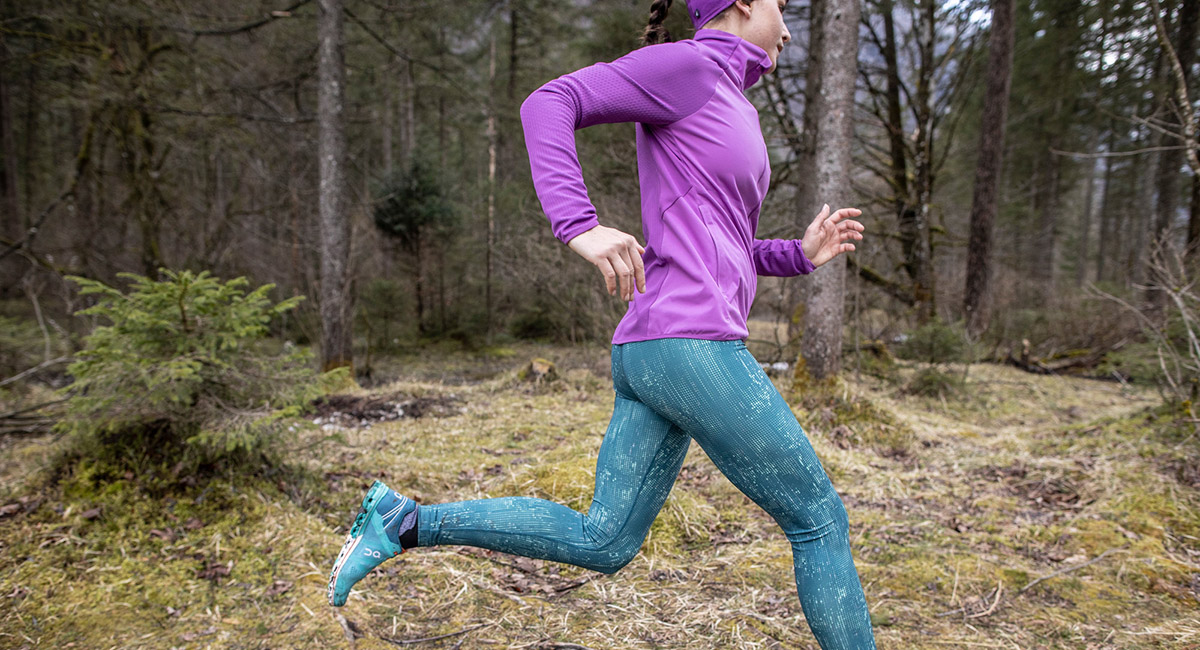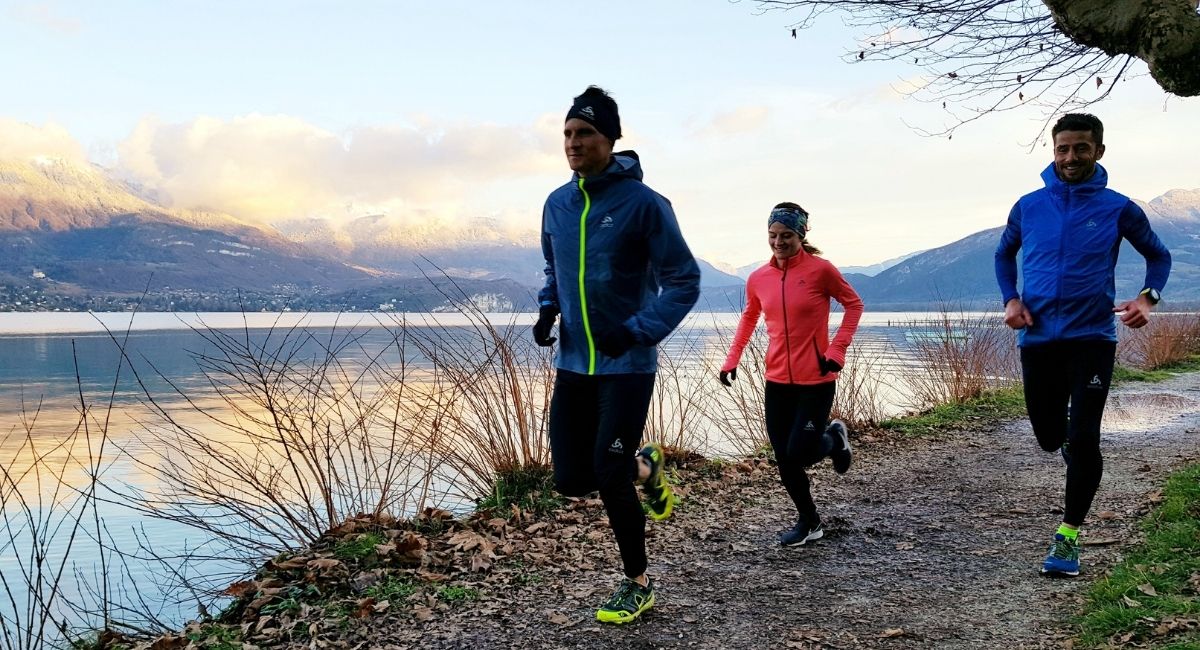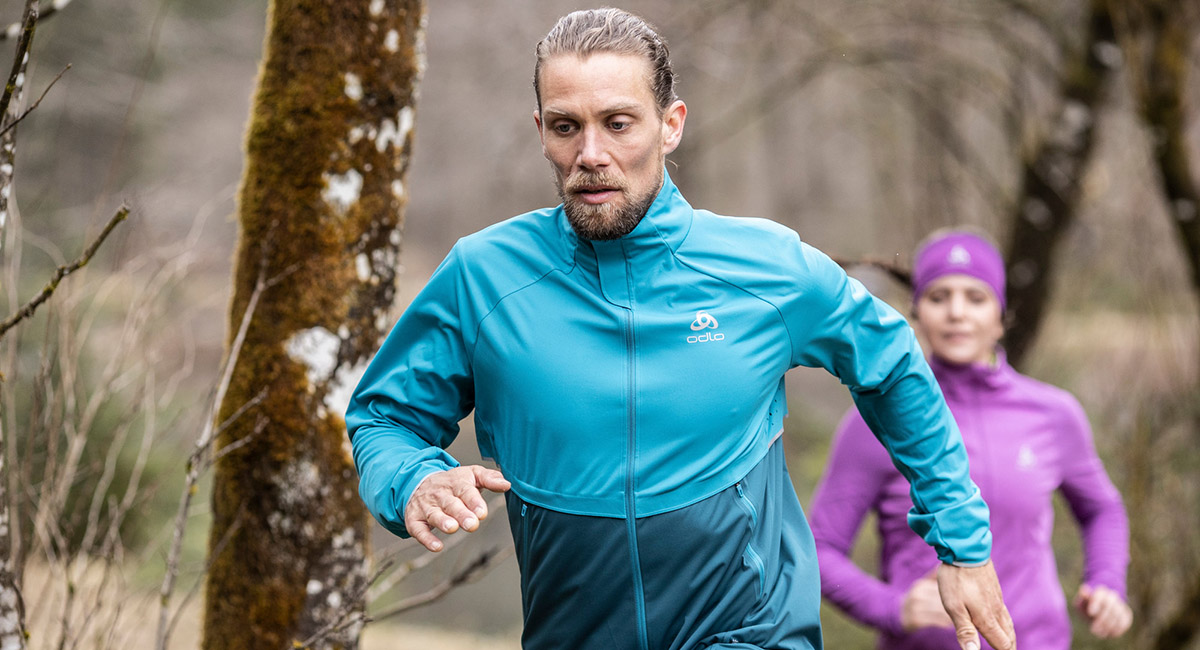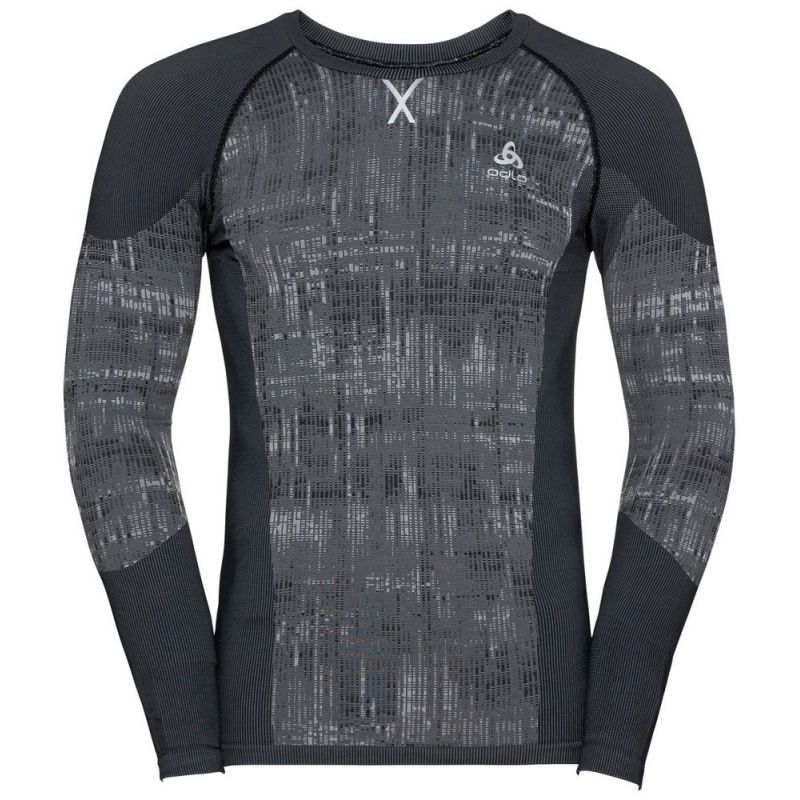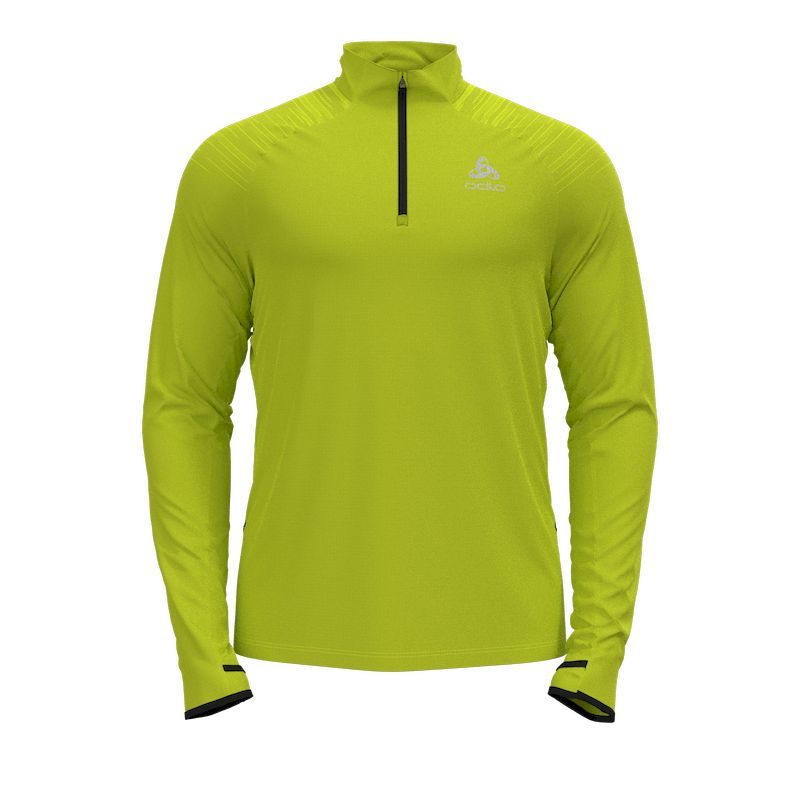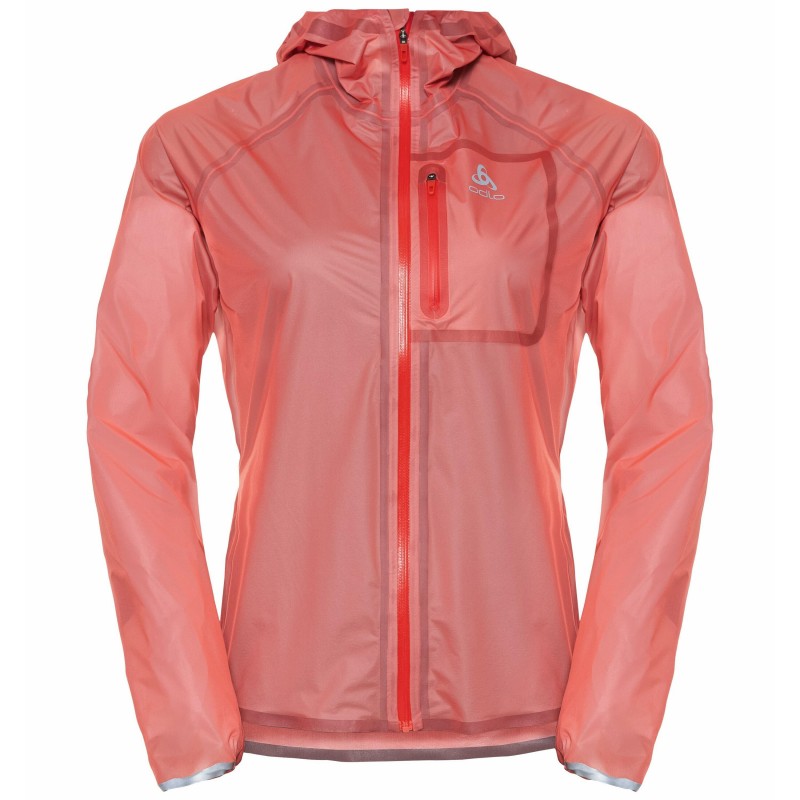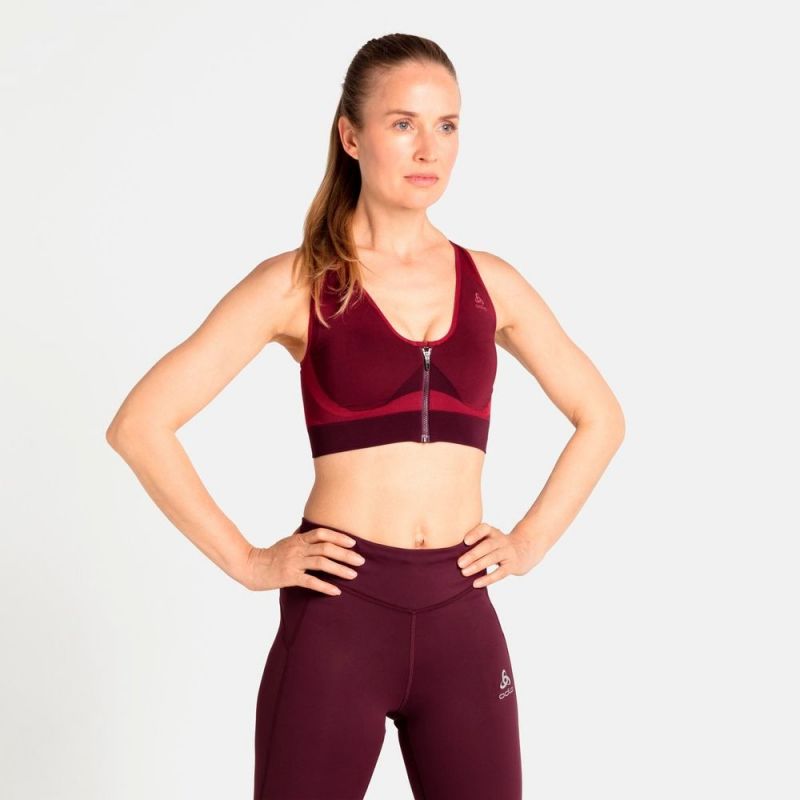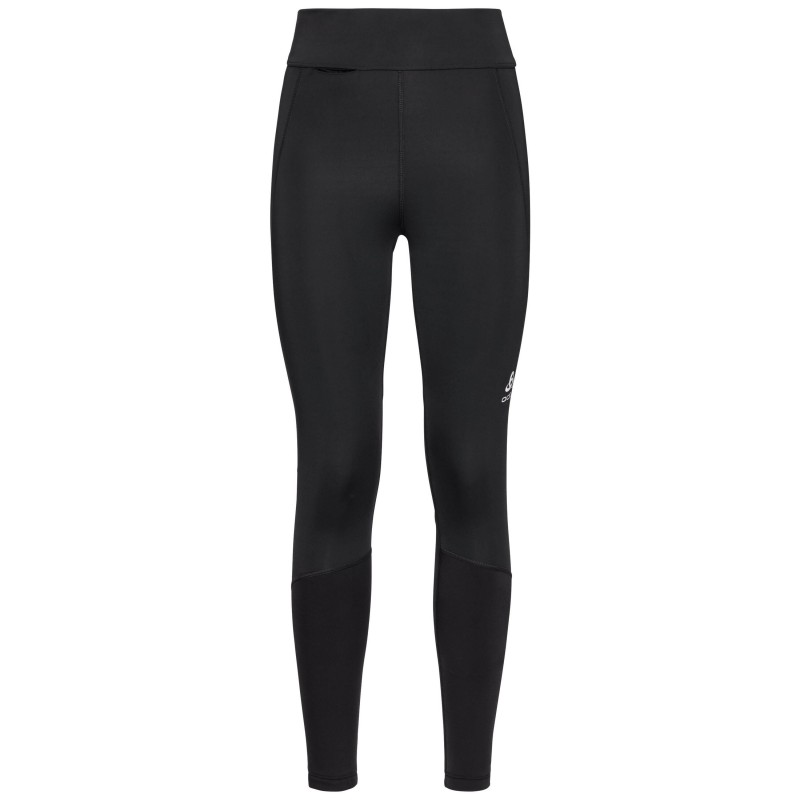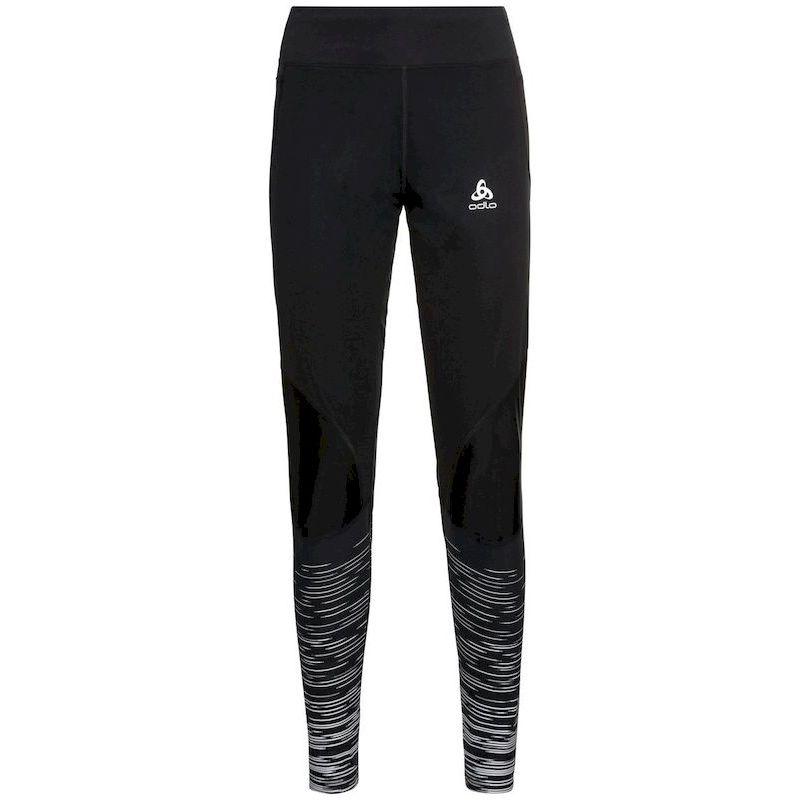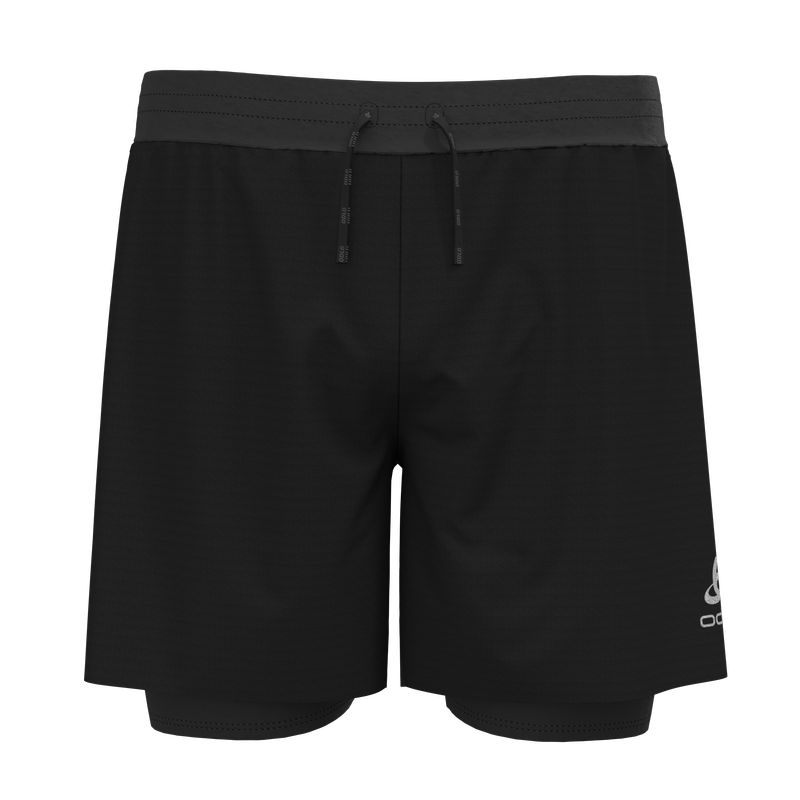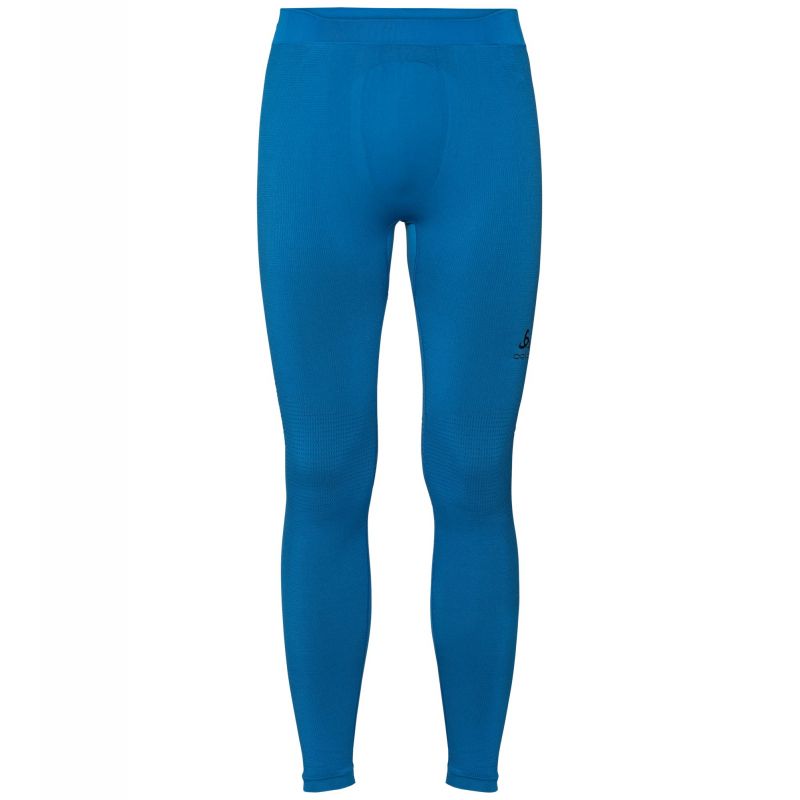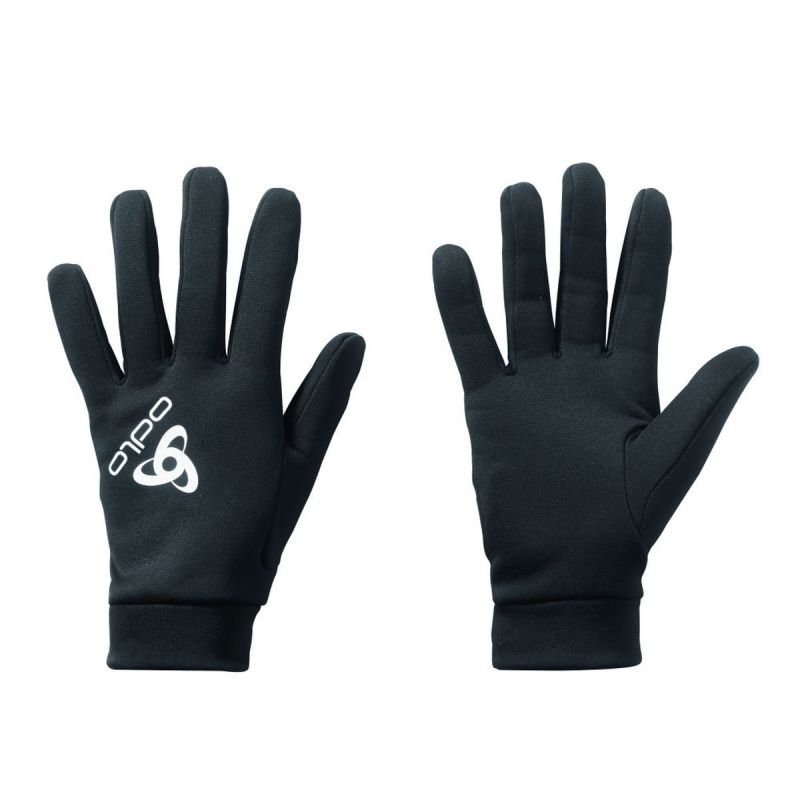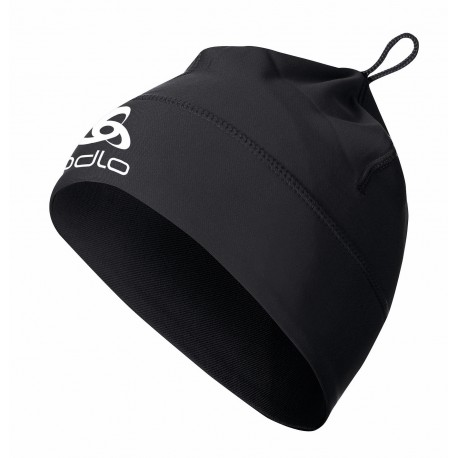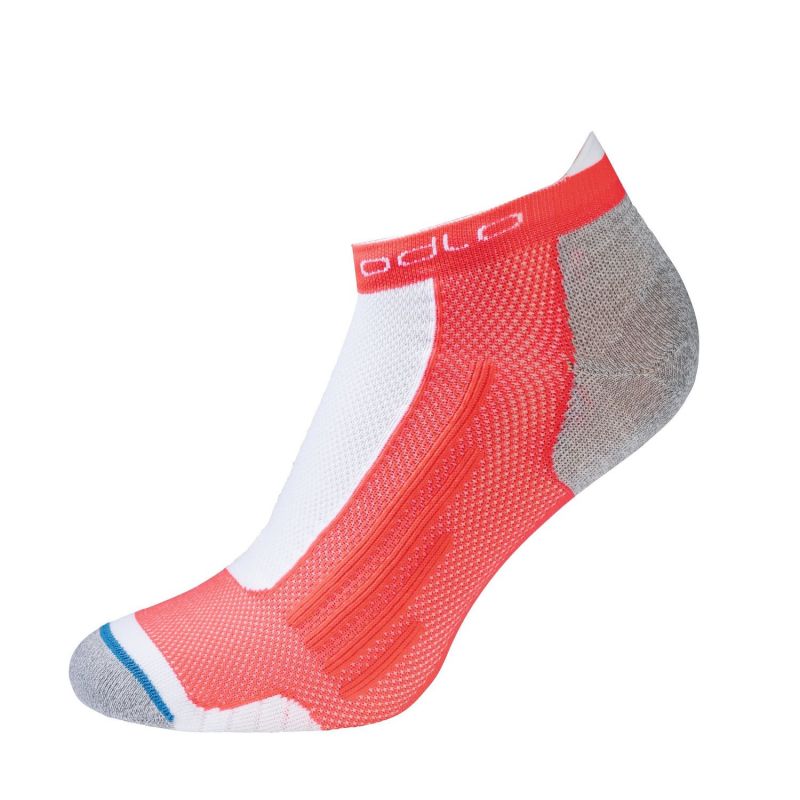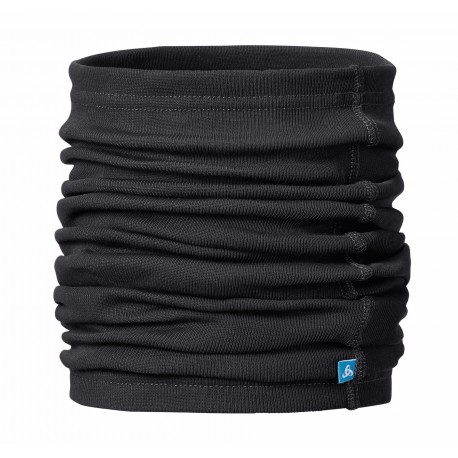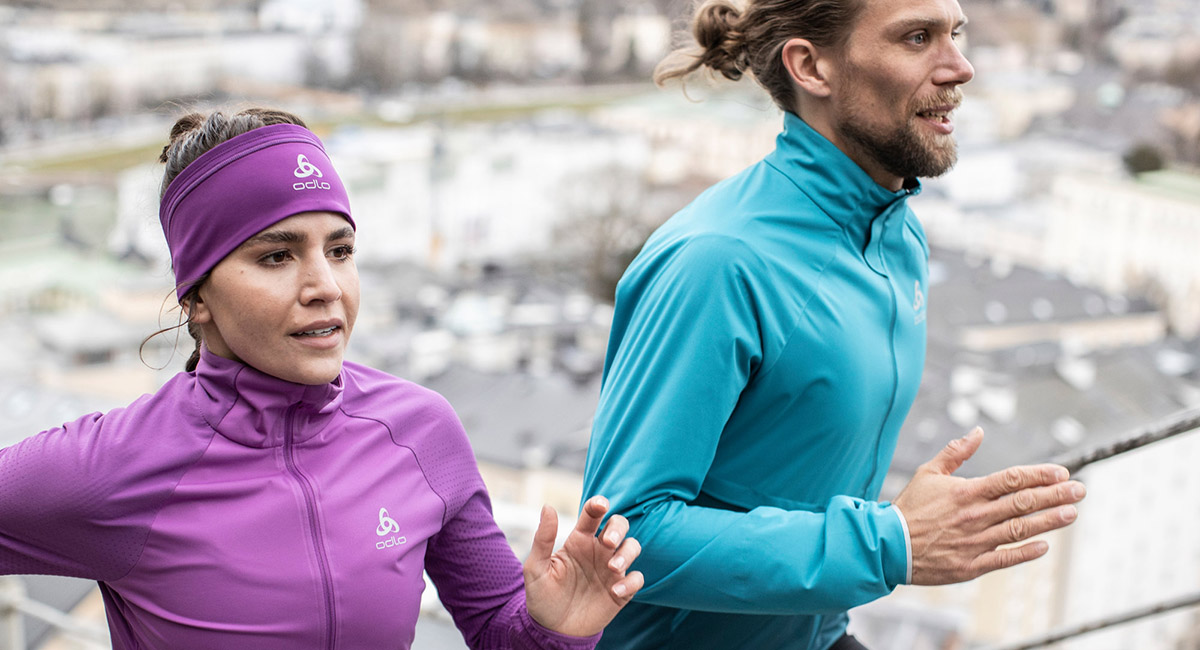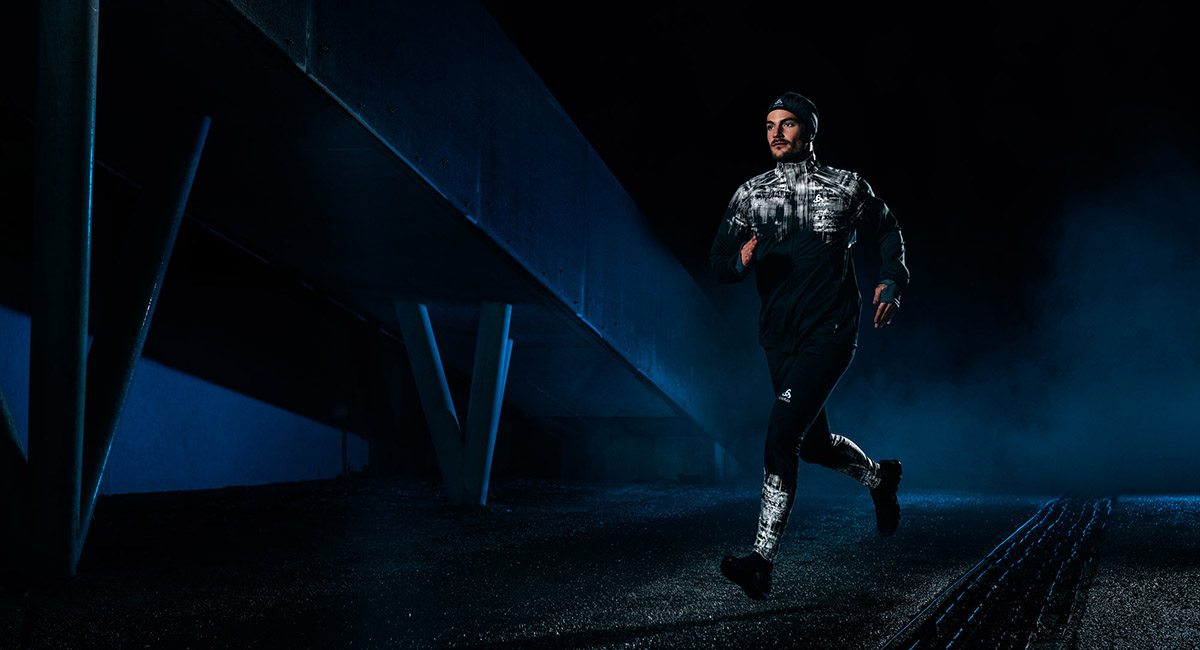Maintaining your sporting rhythm and your weekly workouts despite winter conditions is not always easy. It's hard to motivate yourself to run on windy, cold, rainy or sometimes even snow and ice days. In short, it would almost give a good excuse to avoid a running outing after work...
So getting to the next question: how to dress for running in winter? The art of running in variable weather conditions is tricky. As often, it's all about layering technical layers effectively so that you don't end up with your whole wardrobe on your back, or completely frozen.
Here are our tips for running and choosing the right outfit to tackle the cold but also potential bad weather. No need to warm up, follow the guide and learn how to dress well for running in winter!
- Upper body: between protection and insulation
- Lower body: between comfort and freedom of movement
- Protecting your extremities for a quality outing
- Our Hardloop selection in the Odlo range
- Our advice before putting on your sneakers
How to dress for running in winter: upper body
When you run, your upper body is the part most exposed to the cold, unlike your legs which already have less wind resistance and which produce more heat thanks to the muscles in action.
First, forget your hoodies and cotton t-shirts and opt for close-fitting clothes in technical fabrics. Large running clothes are in fact to be avoided because the entry of air and therefore of cold is much greater. However, when the temperatures drop, it is not very pleasant to have cold drafts circulating under your clothes.
Also leave aside your cotton belongings because the fabric absorbs moisture but does not evacuate it.We advise you to adopt the system of three layers that we are going to detail for you now, made up of specific technical fabrics to optimize the supply of heat, the evacuation of sweat and protection against external bad weather.
Winter running clothes: adopt the 3-layer system
The three-layer system has become a must for running in winter. It allows you to adapt your equipment according to the weather conditions and the intensity of your run. Each layer has different and complementary characteristics. The first will provide breathability, the second warmth through its thermal insulation and the third, windproofness and impermeability.
The three-layer system is easily accessible because the first layer, in direct contact with the skin, must be worn during your running session. The second layer is a thermal insulation layer, providing warmth to the body and to be added when temperatures are low. Finally, the third layer is not necessarily worn because it only intervenes in the event of bad weather (wind, rain, snow, etc.). Its windproof and waterproof (or at least water-repellent) nature offers you effective protection against the modifications of the weather.
Now that you have understood the principle, let's go into a little more technical detail about the characteristics specific to each layer.
First layer: breathability
The first layer is in direct contact with your skin and aims to properly manage moisture during exercise. Of course, when you run, you sweat and your running shirt in direct contact with your skin becomes wet. Your first layer must therefore be breathable, allowing the fabric to dry quickly and prevent the cold from reaching you during your running session. A damp or wet cloth deprives the body of its natural heat, favouring this unpleasant feeling of cold against the body (or how to stay sick-abed the next day!).
So banish cotton t-shirts from your wardrobe and opt for technical underwear made of hydrophobic fibres that will properly absorb your sweat and dry quickly.
For your information, you will sometimes hear about “second skin”. The second skin is an intermediate layer between the skin and the first layer, acting as layer 0. It is generally very close to the body.
➤ Technical Underwear - Shop
Second layer: thermal insulation
The second layer is essential for running in winter because it provides insulation from the cold. It retains the heat emitted by your body to keep it at its temperature despite the cold. There are second layers that are more or less breathable depending on the intensity of the effort. Whether it's for a low-speed winter jog, a cold-weather running competition or a white trail, you will choose a second layer that is more or less thick and therefore more or less warm.
For a practice with such intense effort, opt for a second layer that is light enough to gain breathability and reduce the high heat input. There are second thermal layers that are not afraid of moisture or even absorb it to better evacuate it. A synthetic fiber fleece will, for example, keep its thermal insulation capacity even when it is wet. If you want to know more about this, we suggest you take a look at the article "how to choose the right fleece jacket", you might be interested!
This category includes jackets such as: fleeces, softshells and light down jackets.
➤ Trail Running Shoftshell - Shop
Third layer: windproof, waterproof, water-repellent
Going out for a run in winter also means dealing with bad weather such as wind, rain or snow. The latter can become anecdotal, provided you equip yourself with a third layer, with waterproof, breathable and windproof characteristics. Also called Hardshell, this third layer is designed to keep you dry and sheltered from the wind. Indeed, the contact of the wind on the humidity of your first or second layer accentuates the feeling of cold. And to find out how to choose the right hardshell jacket, it's here!
To insulate you well, your winter running jacket must therefore have a waterproof and breathable membrane. The operation is simple, the pores of the membrane are too small for water to penetrate but large enough for sweat to escape, which is therefore perfect for running in winter.
Next step: the choice of fabrics. Synthetic, wool, down, cotton, what are the advantages and disadvantages?
| Material | Advantages | Disadvantages |
| Synthetic | Quick drying, good moisture management, impression of greater lightness compared to other fabrics, recyclable, inexpensive | Does not prevent the appearance of natural odors |
| Natural wool | Good insulation, good moisture management humidity, no unpleasant odor | Does not dry as quickly as synthetic, fabric which seems less light than the others |
| Down | Good insulation, good moisture management, no unpleasant odor | More expensive, slow drying |
| Cotton | Inexpensive, versatile | Low insulation, low moisture management |
➤ Running Jackets - Shop
Choosing dark colours for running in cold
The color of your winter running outfit is also important and useful. Remember that winter running clothes are made out from fibres that traps heat and warm the body. Opt for dark colors! The sun may be less hot during the winter period, but your clothes will absorb its heat and contribute to your comfort during your winter run.
On the other hand, dark colors are not very visible, so be sure to bring safety elements (bracelet or reflective vest, headlamp, etc.), especially if you finish your running sessions at nightfall or start them before sunrise.
The importance of a suitable running bra
For women, the choice of sports bras should also be made with care. Chest pain can quickly end your run. There are several things to consider when making your selection.
The under chest band is the most important element of all because it essentially helps maintain the chest during exercise. It must be both comfortable and close fitted. To ensure that the chest band fits properly, you should be able to fit only two fingers under it. If not, opt for a larger or smaller back band.
Another element to choose well: the size of the support. The support must not wrinkle or cut the breast, but it must embrace it perfectly. We also advise you to opt for wide straps that cross at the back, which are often more comfortable and offer better support.
Underwires should also be as soft and comfortable as possible. They must follow the contour of the breast without compressing it or cutting it. The bra should offer you support and no compression of the chest.
Now that you're finely equipped for your upper body, let's move on to specific lower body clothing for winter running.
➤ Women's Sports Bra - Shop
How to dress for running in winter: lower body
As you can imagine, when you run, your legs are constantly in motion. It is therefore not necessary to cover them as much as the upper body.
Winter running tights
The legs are the part of the body that generates the most heat during a run. Even in winter, insulating protection from the cold is not necessarily useful. A pair of running tights, light but close to the body, will keep the heat emitted by your muscles. The ideal is to opt for a stocking that keeps you warm enough at the start of the session then keeps your body at temperature by breathing enough to evacuate the sweat.
Synthetic materials are therefore recommended for their comfort and flexibility, guaranteeing significant freedom of movement. If you have to run in very cold weather (temperatures below -10°C), you can pair your tights with running pants or windproof shorts, thus minimizing the impact of the wind on your body.
➤ Running Tights & Leggings - Shop
Winter Running Underwear
There are no set rules for winter running underwear. Above all, they must be comfortable to wear. Opt for underwear that offers good support while remaining flexible.
Also favour running underwear with flat seams to avoid possible irritations with the skin, which are very unpleasant during exercise! Breathability is also very important here.
➤ Running Underwear - Shop
Winter running socks
Just like for the upper body, banish cotton socks for your running outings, even in cold weather because they do not wick away moisture. A wet sock is a sock that causes blisters. To run in winter, wearing breathable socks is highly recommended. There exist woollen ones for the winter, to benefit from an excellent ratio between breathability and warmth.
➤ Running Socks - Shop
Running shoes
Running shoes are the main tool of the runner's equipment. It is essential to adapt them to the environment of your race. Indeed, if you run in town, without snow, and the only seasonal change is the cold, your usual pair with possibly a pair of warmer running socks will do the job perfectly.
If you run regularly on the trail, humidity or even snow can be part of it. For this, it is preferable to opt for trail shoes with well notched soles to avoid bad support or slipping. Finally, if you are a fan of white trails, you can add chains to your notched soles.
Whether on muddy terrain or in the snow, we therefore recommend that you opt for waterproof trail shoes such as the Ultra Raptor GTX from La Sportiva or the Peregrine 11 GTX from Saucony, reliable, robust and perfect model for running on technical, uneven and slippery surfaces.
Most of your body is now ready to brave the winter to enjoy your running outings. However, it is not necessarily the most sensitive. The extremities of your body, such as the hands, the head or the neck, are the first affected by the cold. Don't forget to protect your extremities, it's never pleasant to run in winter with your neck exposed or your hands frozen.
➤ Trail Running Shoes & Running Shoes - Shop
Winter running gear: protect your extremities (head, hands, neck)
The hands and head are the main sources of heat loss. Suffice to say that by protecting them, you can easily reduce this heat loss to find more and more pleasure in your running sessions in winter.
Winter running gloves
Who has never had cold hands when going out for a run in winter? Nobody ! Some jackets (second or third layer) are equipped with thumb loops: the jacket covers the top of your hands, passing between the index finger and thumb. This solution may be enough when it's cool, but when it's really cold, running gloves are strongly recommended.
In silk, wool or fleece, the choices are many. Some are warmer than others, or more breathable. In short, the choice of your gloves most often depends on your geographical location.
In rainy or windy regions, it is best to opt for windproof and water-repellent gloves to keep your hands dry for as long as possible. In colder places, opt for fleece or wool gloves, which will be warmer but less protective against humidity and wind. Note that fleece material is often more comfortable and breathable than wool. If, on the contrary, you live in sunny regions with rather mild winter temperatures, we advise you to opt for silk running gloves.Also, the touch technology is a plus that allows you to use screens without removing your gloves, so practical if you regularly handle your smartphone for music or your running application! Choose your winter running gloves according to the environment in which you are going to run.
➤ Running Gloves & Trail Gloves - Shop
Beanies for running
The head is where heat is lost most quickly. The hood can be useful to limit this heat loss but is sometimes difficult to keep in the presence of wind or, depending on your speed, the terrain... For the mobility of the neck, it is not very practical either.
The winter running hat is therefore ideal for keeping your head warm since it will stay in place, even in the event of strong winds. On the material side, polyester is to be preferred because it will keep your head warm while being breathable, unlike wool or cotton, for example. It will therefore dry quite quickly.
The elastane will bring an elastic side to the hat, it will best fit the shape of your head while guaranteeing optimal comfort. There is no temperature rule for wearing a running hat during your outings, but it is advisable to wear it as soon as it is cold (below 5°) or when it is windy, especially to protect your ears.
➤ Running Beanies - Shop
The running balaclava for extreme conditions
For your outings in even colder conditions (-20°C), you can opt to wear a running balaclava. This headgear has the advantage of covering the whole head and sometimes also the whole face except the eyes, optimally retaining the heat of your body and your extremities. An effective shield for running in winter against the cold and the wind! Most often in fleece or wool, running balaclavas are to be preferred only when the temperatures are very (very) low.
The neck cover or headband for running
Concerning the neck, scarves are far from being the best solution! Rarely breathable, wearing a scarf for running is also not very pleasant or practical. A running neck warmer will be much more effective, breathable and elastic.
In polyester for faster breathing and drying than wool, the neck warmer is to be preferred when the air is cold or when there is a fresh wind (this will prevent you from catching a cold in your throat). In addition, it is very practical if you want to put it up in front of your nose in case of freezing.
Regarding the running headband, it offers a good alternative to the hat and only covers the ears. We advise you to wear a headband in case of wind, when the temperatures are not cold (10°C). It is preferable, as for the beanie, to choose it in polyester (more breathable than wool and dries more quickly) combined with elastane for comfort and hold.
Last but not least: we advise you to prepare your running clothes warm before putting them on to brave the cold. Regarding the first layers, which touch the body, it is better to take them out of a warm place (not far from the radiator for example) than from a cold sports bag left in the car... This adds comfort that you will appreciate and avoids cooling the muscles before warming up, which is all the more important in winter.
➤ Running Snood - Shop
Our Hardloop selection in the Odlo collection
To establish an example of the perfect outfit for running in winter in complete comfort, we approached our partner Odlo®, a specialist in winter sports.
Upper body
When winter comes and, with it, his deal of freezing temperatures, you can opt for the Bl Top Crew Neck L/S as a first thermal layer. Its technical composition provides great freedom of comfort, unparalleled warmth and natural control of body temperature. On top of that, ZeroScent technology fights odor-causing bacteria.
Equipped with strategically placed ventilated zones thanks to its anatomical construction, stay cool for the duration of your effort! Everything to make this long-sleeved jersey a must in your winter running wardrobe.
Over this technical base layer, the Axalp Ceramiwarm midlayer is perfect for providing you with good thermal insulation. With ergonomic zones designed to promote warmth and ventilation, this jacket combines brushed fleece on the front with Odlo's famous Zeroweight fabric on the back and sides. With mesh pockets, reflective details and thumb loops, the Axalp Ceramiwarm will accompany you on all your outings in cold weather!
In case of bad weather, the Jacket Zeroweight Dual Dry Waterproof will be your best ally to fight the elements. This waterproof running jacket has been designed to protect you without ever weighing you down. Endowed with foolproof waterproofness (water column of 20,000 mm), exceptional breathability (50,000 MVTR) but above all an exceptionally light weight of 53 grams, this jacket has all the details requested to a waterproof sports jacket. It is not for nothing that it was rewarded with an ISPO Award!
For women, a sports bra is highly recommended for comfortable running. At this level, the Sports Bra Seamless High offers high support to sportswomen while promoting great freedom of movement. In addition, its molded cups adapt to all shapes and sizes thanks to the removable pads.
And for even more comfort, the extra wide hook fastening in the back allows for a personalized fit. Everything to make your running outing go as smoothly as possible!
Lower body
To keep your legs warm during your workouts in winter, Odlo has selected the Performance Warm tights for runners, which will delight with their thermal qualities and excellent moisture management. These men's running tights are also very comfortable thanks to the flat seams which limit chafing and the body mapping technology which guarantees a precise fit. Warm, well-thought-out tights to accompany you on all your intense outings in cold weather.
On the women's side, the Tights Zeroweight Ceramiwarm tights are perfect: extremely light, yet they provide all the warmth required. Ceramiwarm technology allows you to warm up as you run without overheating thanks to perfect heat management. In terms of comfort, its elastic material ensures the right fit, while its reflective details make you visible to everyone. Handy when the sun goes down early!
In the same Zeroweight family, the Warm Reflective tights should please you! Intended for cold weather, it combines freedom of movement and performance, by adding water-repellent technology.
Also, very visible, it allows you to continue your evening outings without problems. To beat your records, these tights allow you to face the cold at a steady pace. On your marks!
Even in winter, running in shorts is possible: the legs warm up on their own, especially if the sun is shining. We therefore allow ourselves to offer you the 2-in-1 Shorts Axalp Trail.
With its integrated shorts, it combines support, comfort and freedom of movement. Plus, its excellent moisture management ensures you don't catch a cold. In addition, it has many small details that make the difference!
Winter running accessories: beanie, neck warmer, gloves
To keep your hands protected from the cold, the gloves Stretchfleece Liner designed by Odlo are made of elastic fleece, which gives them all the warmth and softness you need during your sessions in the cold. In addition, their small size allows you to wear them as under-gloves during other activities, such as skiing.
To brave the coldest temperatures, you can opt for the Polyknit beanie designed by Odlo, offering good moisture transfer and excellent heat retention. Thanks to its snug and elastic fit, this running beanie comfortably fits the contours of the head without pressure points so that you remain fully focused on your running session.
When running, whatever the weather, a good pair of socks is mandatory. The Socks Short Running Low Cut have everything you expect from sports socks: good moisture management, reinforcements in the toes and heels, arch support and optimized ventilation... A must-have for all runners!
The Warm neck warmer keeps your neck protected from the cold and drafts during your running outings. With its good thermal insulation and quick drying, this neck warmer is ideal for running in winter.
Running in winter: our few essential tips before putting on your sneakers
Running clothes are certainly essential, but let's not forget that a healthy diet and good hydration are also essential in the preparatory phase of your outings. Not to mention the accessories to be visible, which are very important for staying safe.
Food & Hydration
It is obvious that it is advisable to have a healthy and balanced diet, especially for running in winter. You have to eat well and stay hydrated, as much before, during, as after the effort. The cold will indeed increase the needs of your body which will draw more quickly on your reserves. The body therefore requires more resources than normal to regulate its temperature.
In winter, it is advisable to slightly increase (by 20%) the ration of carbohydrates and lipids to counter these effects. You can also eat during exercise, shortly before or shortly after: dried fruit, cereal bars... Finally, you must drink regularly and not wait until you are thirsty. The mouth, during colder months, will dry out more quickly. So drink regularly, little in quantity but often. Know that drinking hot (or at least not drinking cold) is better for your body if you want to run in winter.
A few essential accessories
Even more so in winter than in summer because visibility is reduced (shorter days, fog, rain, snow, etc.), it is essential to be equipped to see but above all to be seen. Among the essential accessories if you are used to running at night, the headlamp leaves your hands free and always lights you up where you are going, while following your head movements and therefore your gaze.
It is also used to be seen by other runners, or even by motorists if you have to run on the road at night. If so, opt for a headlamp with a rear indicator, as is the case with the Petzl Nao® for example!
Need light? Discover our range of headlamps for trail-running!
We also advise you to leave with reflective vests or armbands when you're running in the dark for your safety, especially if you have to run in the forest or on the road. The Zeroweight Pro Warm Reflect Jacket designed by Odlo offers a reflective design to be seen at night.Another very practical and useful accessory: running sunglasses that provide comfort and protection. Already, as their name suggests, they will protect your eyes from the sun, which is omnipresent even behind the clouds. Also, they allow you to protect yourself from all the dust or other things that could reach you on rough roads.
It is all the same much more pleasant to run in the cold without having the biting cold that tears you a few tears on the way or to run in the sun without having your eyes squinted by the glare!
Finally, there are very useful accessories such as the whistle, which do not take up space but which can save you precious time if you get lost or injured for example. The same is true for the survival blanket which can protect you from the cold air while waiting for help.
Three-layer system, technical fabrics, running tights, sports socks... you now know what to wear, when to wear it and in what material. Running in winter will quickly become a real pleasure!
Questions about choosing your equipment? Don't hesitate to call us on +33 (0)1 84 67 14 24 or through our Help Center, our running team will be happy to help you.
➤ Running Clothes, Shoes & Gear - Shop
Crédits photos : ©Odlo

